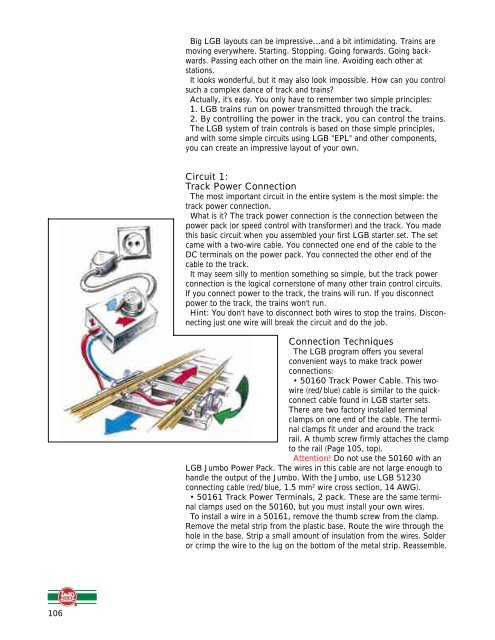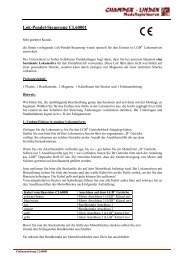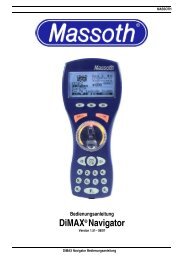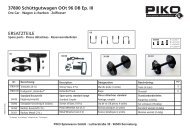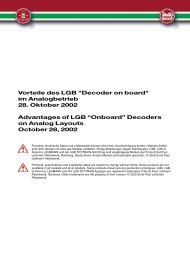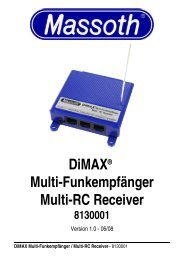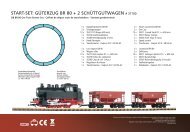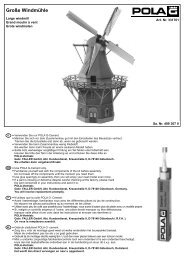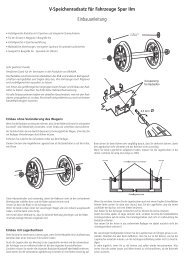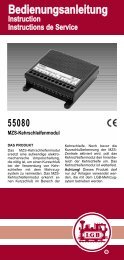00559 Interim PDF Edition - Champex-Linden
00559 Interim PDF Edition - Champex-Linden
00559 Interim PDF Edition - Champex-Linden
Create successful ePaper yourself
Turn your PDF publications into a flip-book with our unique Google optimized e-Paper software.
106<br />
Big LGB layouts can be impressive…and a bit intimidating. Trains are<br />
moving everywhere. Starting. Stopping. Going forwards. Going backwards.<br />
Passing each other on the main line. Avoiding each other at<br />
stations.<br />
It looks wonderful, but it may also look impossible. How can you control<br />
such a complex dance of track and trains?<br />
Actually, it's easy. You only have to remember two simple principles:<br />
1. LGB trains run on power transmitted through the track.<br />
2. By controlling the power in the track, you can control the trains.<br />
The LGB system of train controls is based on those simple principles,<br />
and with some simple circuits using LGB "EPL" and other components,<br />
you can create an impressive layout of your own.<br />
Circuit 1:<br />
Track Power Connection<br />
The most important circuit in the entire system is the most simple: the<br />
track power connection.<br />
What is it? The track power connection is the connection between the<br />
power pack (or speed control with transformer) and the track. You made<br />
this basic circuit when you assembled your first LGB starter set. The set<br />
came with a two-wire cable. You connected one end of the cable to the<br />
DC terminals on the power pack. You connected the other end of the<br />
cable to the track.<br />
It may seem silly to mention something so simple, but the track power<br />
connection is the logical cornerstone of many other train control circuits.<br />
If you connect power to the track, the trains will run. If you disconnect<br />
power to the track, the trains won't run.<br />
Hint: You don't have to disconnect both wires to stop the trains. Disconnecting<br />
just one wire will break the circuit and do the job.<br />
Connection Techniques<br />
The LGB program offers you several<br />
convenient ways to make track power<br />
connections:<br />
• 50160 Track Power Cable. This twowire<br />
(red/blue) cable is similar to the quickconnect<br />
cable found in LGB starter sets.<br />
There are two factory installed terminal<br />
clamps on one end of the cable. The terminal<br />
clamps fit under and around the track<br />
rail. A thumb screw firmly attaches the clamp<br />
to the rail (Page 105, top).<br />
Attention! Do not use the 50160 with an<br />
LGB Jumbo Power Pack. The wires in this cable are not large enough to<br />
handle the output of the Jumbo. With the Jumbo, use LGB 51230<br />
connecting cable (red/blue, 1.5 mm 2 wire cross section, 14 AWG).<br />
• 50161 Track Power Terminals, 2 pack. These are the same terminal<br />
clamps used on the 50160, but you must install your own wires.<br />
To install a wire in a 50161, remove the thumb screw from the clamp.<br />
Remove the metal strip from the plastic base. Route the wire through the<br />
hole in the base. Strip a small amount of insulation from the wires. Solder<br />
or crimp the wire to the lug on the bottom of the metal strip. Reassemble.


